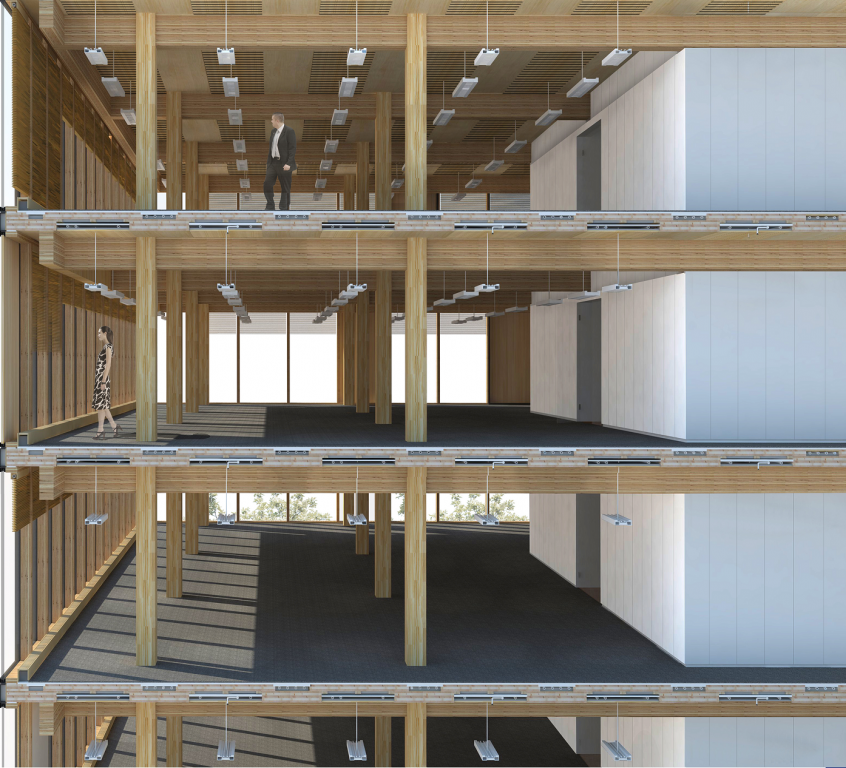Washington’s modern timber industry and early adoption of tall wood buildings have helped the state lead the nation in incorporating innovative wood products into the environmental stewardship movement. The recent opening of two mass timber factories in Colville and Spokane Valley underscores this.
Working forests and all wood products continue to be a part of the carbon solution as trees sequester carbon from the air, and continue to store the carbon in wood products. Mass timber plants like Vaagen Timbers enables a new use for Washington lumber, allowing for engineered wood to be utilized where only concrete and steel once was the preferred option.
Timber and wood products proponents believe that mass timber has the potential to benefit the environment, economy, builders and forestry industry. It’s also fostering an opportunity for timber leaders, state policymakers, builders and conservationists to work together as loggers and environmentalists alike agree that building with cross-laminated timber (CLT) is one part of the response to climate change.
Conservation groups like Nature Conservancy see CLT as a means of reforestation and supporting stewardship. Wood is a renewable resource that improves air quality by storing carbon from the atmosphere and holds onto the carbon for the life of the wood product.
“When we take the wood out of the forest, we are planting new forest and sequestering new carbon,” said Indroneil Ganguly of the University of Washington to the Seattle Times.
Ganguly, an associate professor at the University of Washington’s School of Environmental and Forest Sciences, studies the environmental impacts of wood products and CLT. Building with timber, he said, is “almost like multiplying the acres of forest.”
Washington Public Lands Commissioner Hilary Franz envisions that the mass timber industry also could help support the state’s forest health initiatives. An estimated 2.7 million acres of dead and dying trees are on federal, state and privately-owned lands east of the Cascades. Engineered wood products like CLT can be made with smaller-diameter trees and even dead trees. Harvesting these trees to reduce wildfire risk and promote forest health could, in turn, create an opportunity for some of the forest treatment efforts to “pencil out financially,” Franz said recently.
The significant role private forestland owners hold in the timber industry and the state’s economy as lumber producers, jobs creators and land management leaders will continue as more policymakers embrace both traditional and newer wood products. Working forests sustain the state’s third-largest manufacturing industry. And private forests, after all, account for two-thirds of the state’s timber harvests and have helped lead the way on sustainable forest practices and environmental stewardship.
“This is just one example of how we can create jobs, transition to a cleaner economy and build new infrastructure with a lower carbon footprint through innovation,” Governor Jay Inslee said in a news release. “This is a leap forward for sustainable construction and economic development in our state.”
